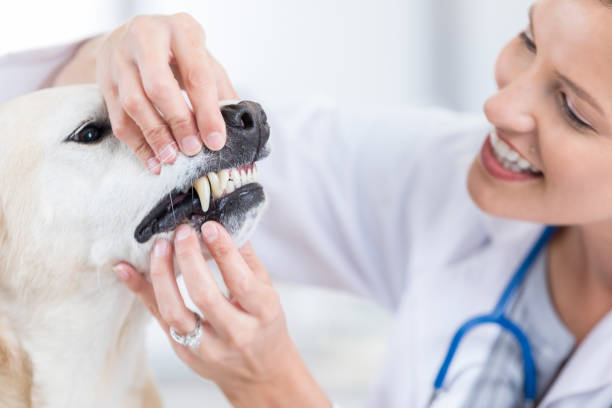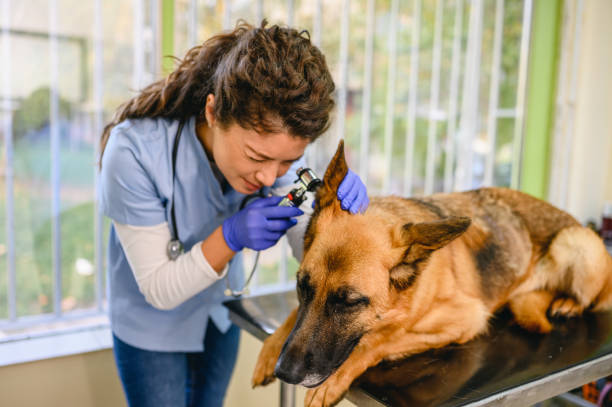Comprehensive Guide to Anemia in Dogs: Symptoms, Causes, and Treatment

Anemia in puppies is a condition that impacts thousands and thousands of pets worldwide, but many dog owners stay blind to its reasons, signs and symptoms, and treatment options. This article aims to provide a comprehensive assessment of anemia in puppies, assisting pet mothers and fathers in recognizing the signs and symptoms early and taking appropriate action to make certain their furry pals stay long, wholesome lives.
What Is Anemia in Dogs?
Anemia refers to a clinical circumstance wherein there may be a lower number of red blood cells (RBCs) or hemoglobin in the bloodstream. Red blood cells are responsible for transporting oxygen from the lungs to the rest of the frame. When a dog suffers from anemia, its organs and tissues may not acquire enough oxygen, leading to numerous health headaches.
There are number one types of anemia in dogs:
Non-Regenerative Anemia: In this example, the bone marrow does not produce enough red blood cells to compensate for the loss. This kind is normally related to chronic sicknesses or bone marrow problems.
Regenerative Anemia: This takes place whilst the bone marrow responds accurately to the lack of red blood cells with the aid of producing extra of them. It is regularly resulting from outside elements together with blood loss or parasites.
Common Causes of Anemia in Dogs
Understanding the underlying purpose of anemia is essential for powerful treatment. Below are a few common causes of anemia in dogs:
Blood Loss
Blood loss can arise due to trauma, surgery, or internal bleeding as a result of conditions like ulcers, tumors, or parasitic infestations (e.g., fleas, ticks, and hookworms).Nutritional Deficiencies
A loss of vital nutrients, which includes iron, vitamin B12, or folic acid, can lead to anemia. These vitamins play an important function in the production of pink blood cells.Chronic Diseases
Certain continual ailments, which include kidney disorder, most cancers, and autoimmune issues, can interfere with the production of red blood cells.Infectious Diseases
Infections due to bacteria, viruses, or protozoa (such as Babesia) can wreck red blood cells or impair their manufacturing.Toxins and Medications
Exposure to positive toxins, medicines, or chemical compounds can harm purple blood cells or suppress bone marrow features.
Recognizing the Symptoms of Anemia in Dogs
Early detection of anemia is prime to preventing intense headaches. Here are a few not unusual symptoms to look out for:
Pale Gums: One of the most substantive signs of anemia is pale or white gums. Healthy gums must be purple.
Lethargy and Weakness: Dogs with anemia often appear worn out and lack strength due to inadequate oxygen delivery to their muscle mass and organs.
Rapid Breathing: To catch up on low oxygen ranges, anemic dogs may additionally breathe quicker than common.
Loss of Appetite: A reduced choice to devour can indicate an underlying fitness difficulty, together with anemia.
Weight Loss: Unexplained weight reduction might also accompany different signs and symptoms of anemia.
Increased Heart Rate: The coronary heart may additionally beat faster to circulate blood more correctly, which may cause palpitations.
Collapse or Fainting: In intense instances, dogs may additionally revel in fainting spells or crumble due to intense fatigue and absence of oxygen.

Diagnosing Anemia in Dogs
If you believe your dog has anemia, it’s important to consult a veterinarian directly. Diagnosis typically involves the following steps:
Physical Examination: The vet will take a look for bodily signs and symptoms like faded gums, fast breathing, and lethargy.
Blood Tests: A complete blood count (CBC) can measure the number of red blood cells, hemoglobin stages, and different parameters to verify anemia.
Additional Tests: Depending on the suspected cause, the vet can also recommend additional assessments, including urinalysis, fecal tests, imaging studies, or bone marrow biopsies.
Treating Anemia in Dogs
The remedy plan for anemia relies upon its underlying reason and severity. Some commonplace techniques include:
Addressing the Root Cause
Treating the underlying situation—whether or not it's blood loss, contamination, dietary deficiency, or chronic sickness—is crucial for resolving anemia.Blood Transfusions
In excessive cases, a blood transfusion can be vital to stabilize the canine and repair crimson blood cell stages.Nutritional Support
Supplementing the weight-reduction plan with iron, vitamin B12, or folic acid can help control anemia as a result of dietary deficiencies.Medications
Drugs that stimulate red blood cell production or treat infections may be prescribed based totally on the specific motive of anemia.Parasite Control
Regular flea, tick, and bug prevention can lessen the risk of parasite-related anemia.
Preventing Anemia in Dogs
While not all cases of anemia are stopped, there are steps that you can take to reduce the risk:
Provide a balanced diet rich in essential nutrients.
Schedule regular veterinary check-ups to monitor your dog's overall health.
Stay with parasitic control measures, including monthly flea and tick treatment.
Avoid exposing your dog to toxins and medicines until the vet is advised.
Final Thoughts
Anemia in dogs is a serious condition that requires quick attention and proper management. By familiarizing yourself with reasons, symptoms, and treatment options, you can take better care of your canine partner and improve their quality of life. Remember, initial intervention is important, so if you pay attention to any signal in your pets, do not hesitate to seek professional veterinary advice.
With love, care, and vigilance, you can help make sure to be happy and healthy for your beloved friend for the coming years!
Latest Posts

Guide to Potty Training a Dog: Essential Tips for Success
Potty education for a canine doesn't have to be stressful. This comprehensive guide offers crucial recommendations, hints, and techniques to help you…

Guide to Caring for Your Dog After Tooth Extraction: Expert Tips & Advice
Learn how to attend to your dog after a tooth extraction with our expert guide. Discover essential suggestions for postoperative care, pain control, …

Comprehensive Guide to Treating Dog Ear Infections: Symptoms, Causes, and Prevention
Discover the way to effectively treat and save your canine ear infections with this complete guide. Learn about symptoms, reasons, prognosis, and tre…




